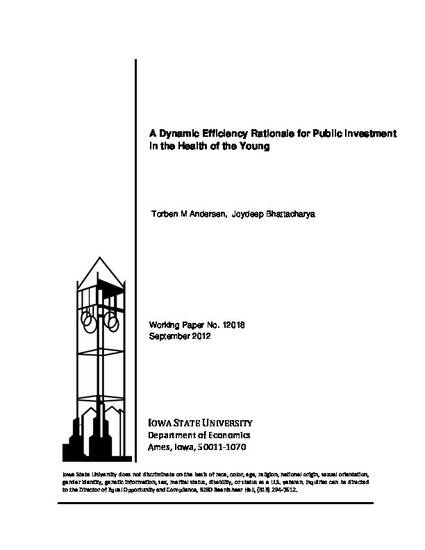
Article
A dynamic-efficiency rationale for public investment in the health of the young
Canadian Journal of Economics
Document Type
Article
Disciplines
Publication Version
Submitted Manuscript
Publication Date
8-1-2014
DOI
10.1111/caje.12095
Abstract
In this paper, we assume away standard distributional and static-efficiency arguments for public health, and instead, seek a dynamic efficiency rationale. We study a lifecycle model wherein young agents make health investments to reduce mortality risk. We identify a welfare rationale for public health under dynamic efficiency and exogenous mortality even when private and public investments are perfect substitutes. If health investment reduces mortality risk but individuals do not internalize its effect on the life-annuity interest rate, the Philipson-Becker effect emerges; when the young are net borrowers, it works together with dynamic efficiency to support a role for public health.
Copyright Owner
Canadian Economics Association
Copyright Date
2014
Language
en
File Format
application/pdf
Citation Information
Torben M. Andersen and Joydeep Bhattacharya. "A dynamic-efficiency rationale for public investment in the health of the young" Canadian Journal of Economics Vol. 47 Iss. 3 (2014) p. 697 - 719 Available at: http://works.bepress.com/joydeep_bhattacharya/69/

This is a working paper of an article published as Andersen, Torben M., and Joydeep Bhattacharya. "A dynamic‐efficiency rationale for public investment in the health of the young." Canadian Journal of Economics/Revue canadienne d'économique 47, no. 3 (2014): 697-719. doi:10.1111/caje.12095. Posted with permission.